Understanding the Complex Family Landscape in Autism
A diagnosis of autism spectrum disorder (ASD) not only shapes the future of the affected individual but also profoundly impacts family systems. This article explores how autism influences emotional, relational, social, and financial facets of family life, and examines how Applied Behavior Analysis (ABA) therapy can serve as a pivotal support in fostering resilience, strengthening bonds, and improving overall family well-being.
The Multi-Dimensional Impact of Autism on Families
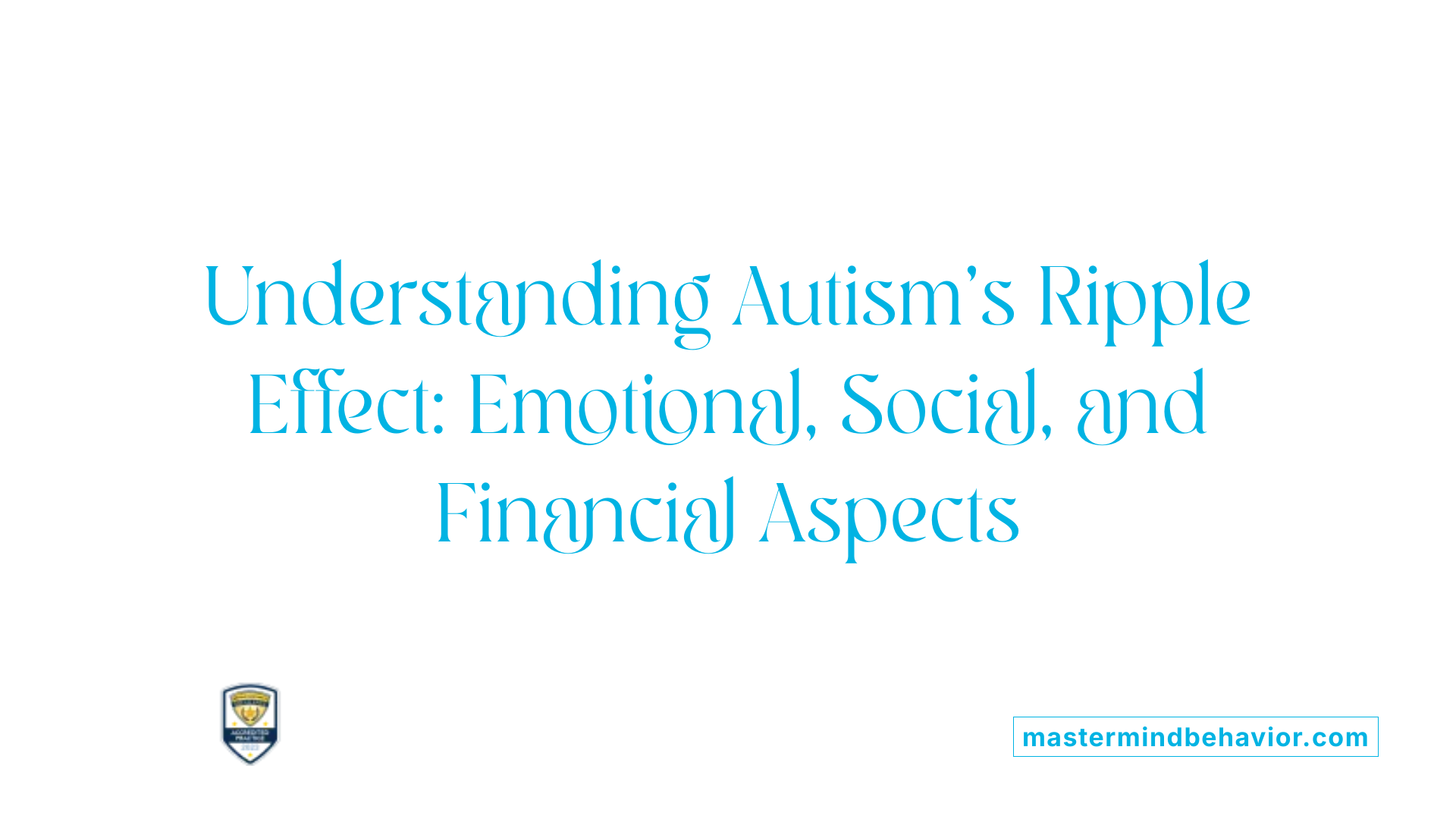
How does autism spectrum disorder impact family dynamics, including emotional, relational, social, and financial aspects?
Autism spectrum disorder (ASD) influences many facets of family life, prompting significant adjustments in daily routines and relationships. Families often feel a mixture of relief upon diagnosis and grief over the challenges ahead. Emotional stress is common, with parents experiencing anxiety, guilt, and emotional exhaustion.
The role shifts within the household as parents may take on new responsibilities like managing therapy schedules and medical appointments. Siblings might feel neglected or overwhelmed but can also develop empathy and resilience as they adapt to the changed family environment.
Socially, families may encounter stigma and social isolation, often avoiding outings or social gatherings that could be overwhelming for the autistic child. Financial burdens are also substantial, including costs of therapies, specialized education, and support programs. These expenses can strain resources and reduce household income, making financial planning crucial.
Support systems and community resources are vital in helping families cope. Open communication, early intervention, and family-centered support services foster a more positive environment. Understanding and addressing these interconnected aspects help families build resilience, strengthen bonds, and improve overall family well-being.
| Aspect | Impact | Family Strategies |
|---|---|---|
| Emotional challenges | Anxiety, guilt, stress | Counseling, support groups, self-care exercises |
| Family roles and responsibilities | Parent caregiving burden, sibling adjustment | Shared responsibilities, open communication |
| Financial concerns | Therapy costs, educational expenses, medical bills | Financial planning, resource navigation |
| Social stigma and isolation | Avoidance of social activities, loneliness | Community engagement, awareness programs |
By recognizing these factors and utilizing available resources, families can better navigate the complexities brought by ASD, promoting healthier relationships and improved quality of life for all members.
Strategies to Support and Strengthen Family Resilience
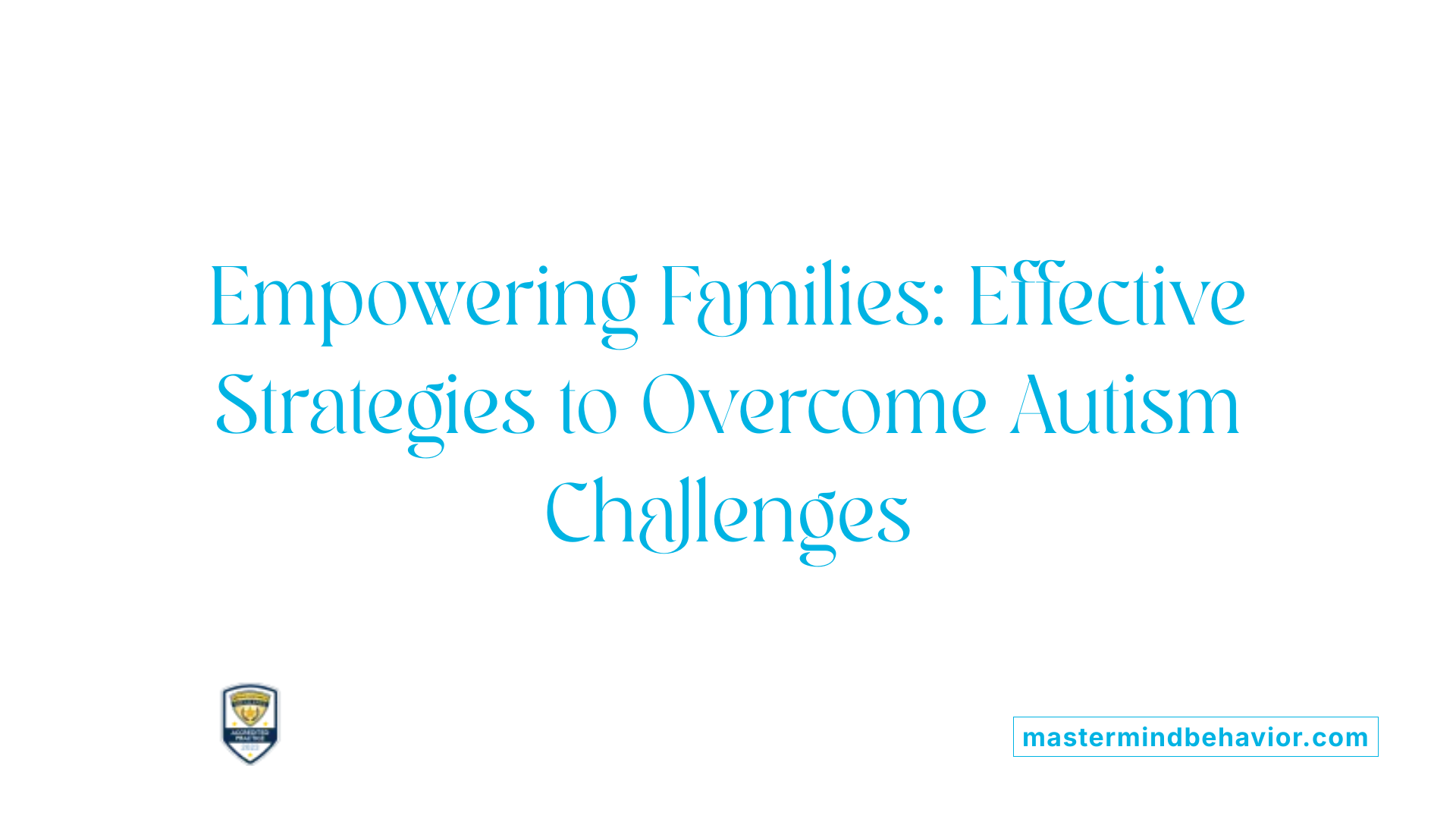
What strategies can support families affected by autism to manage challenges and foster resilience?
Families managing autism often face numerous obstacles, but several approaches can build resilience and support their well-being.
First, establishing strong support networks is crucial. Connecting with organizations like Autism Speaks, GRASP, and local parent groups offers valuable resources, guidance, and advocacy opportunities. These networks help families share experiences, access educational materials, and find community events, reducing feelings of isolation.
Early intervention plays a vital role. Caregiver-mediated therapies, such as naturalistic developmental behavioral interventions, can improve communication and social skills while decreasing challenging behaviors. Programs like Project ImPACT or JASPER provide training for parents and caregivers, empowering them to support their child's development actively.
Educating family members about autism fosters understanding and unity. Involving grandparents, siblings, and extended relatives in educational sessions ensures everyone can contribute to a supportive environment. This shared knowledge encourages cohesive approaches to daily routines and therapy participation.
Addressing caregiver stress is essential for sustaining family resilience. Self-care practices like mindfulness, regular breaks, and engaging in enjoyable activities help manage emotional strain. Practical support, including respite care and community involvement, can provide relief and foster emotional well-being.
Finally, promoting inclusion in educational and community settings supports children's development and family stability. Ongoing access to resources and services like individualized education programs and community activities enables families to navigate challenges effectively and strengthens their capacity to adapt.
Leaning on these strategies—building support systems, engaging in early intervention, educating family members, managing stress, and fostering inclusion—can help families not only cope but thrive alongside their children with autism.
The Role of ABA Therapy in Enhancing Family Dynamics

What role does Applied Behavior Analysis (ABA) therapy play in affecting family relationships and daily functioning?
ABA therapy is a highly effective, evidence-based approach that significantly influences how families adapt and function when caring for a child with autism. Central to its success is the active involvement of parents and caregivers. Through family-centered methods, parents learn to understand their child's unique behaviors, identify triggers, and develop strategies to support their development.
This collaborative process fosters stronger emotional bonds and improves overall communication within the family. Parents are trained to reinforce positive behaviors consistently, which promotes stability and predictability in daily routines. Such active engagement not only accelerates the child's progress but also empowers families to navigate challenges more confidently, creating a supportive home environment.
Ultimately, the integration of family participation in ABA therapy enhances daily life and strengthens family relationships, leading to a more resilient and cohesive unit.
How does ABA therapy benefit families of children with autism?
The benefits of ABA therapy extend beyond individual children to positively impact entire families. By focusing on improving communication, social skills, and reducing problem behaviors, ABA helps children gain independence, making daily life more manageable. This structured and scientifically supported approach is tailored to each child's needs, ensuring effective and meaningful improvements.
Parents often feel more empowered as they acquire practical strategies and understand behaviors better. This empowerment fosters a stronger partnership between families and therapists, contributing to improved emotional well-being. Early and intensive ABA intervention has been linked to significant developmental gains, which can translate into increased participation in mainstream activities and settings.
Moreover, ABA therapy can reduce parental stress related to managing challenging behaviors. As families observe progress and better manage daily routines, family cohesion improves. Overall, ABA creates a supportive framework that equips families with the tools and confidence needed to nurture their child's growth while maintaining family harmony.
Influence of Therapy on Emotional Responses and Coping Mechanisms
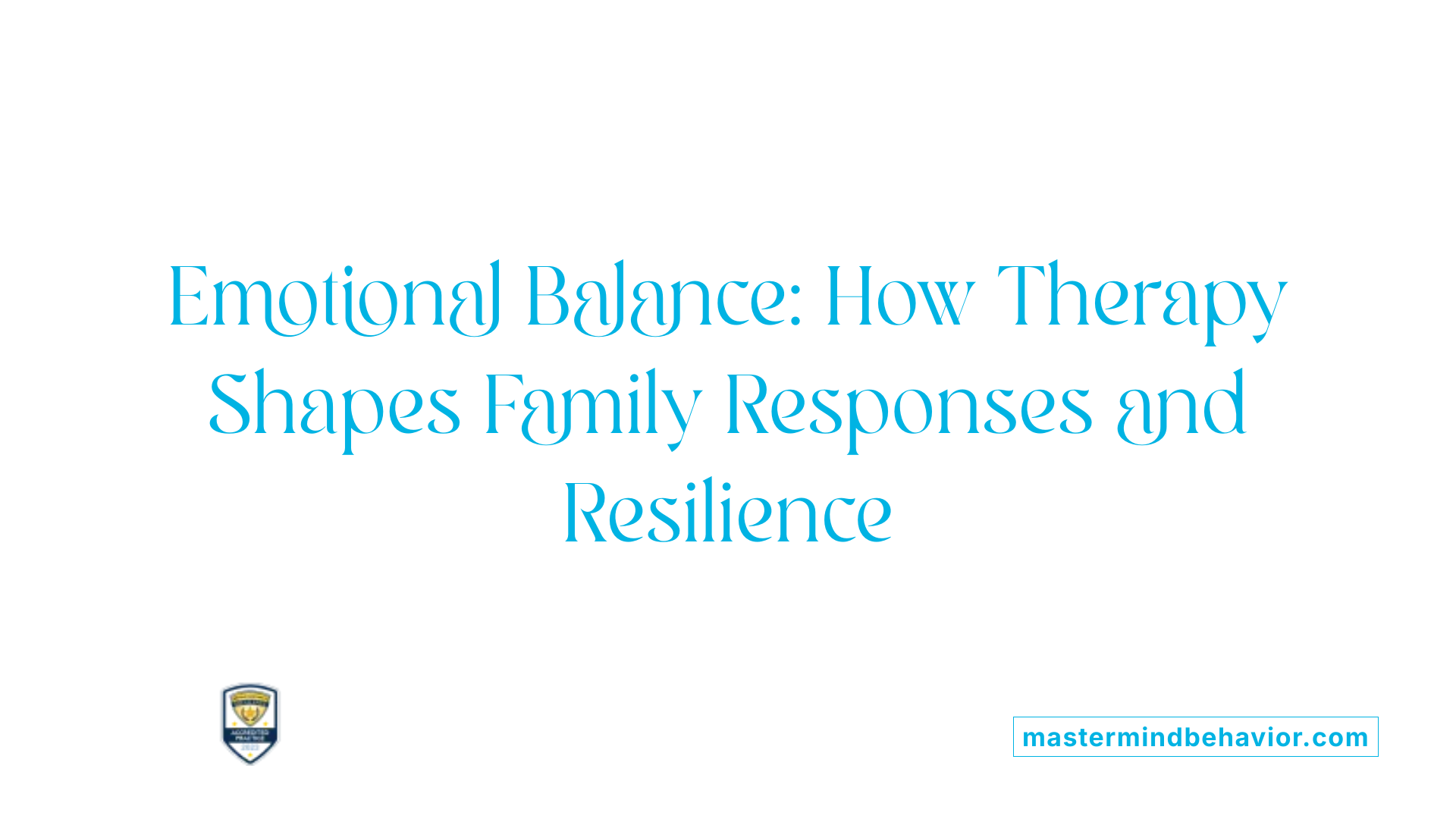 Families living with autism often experience a wide range of emotions, from hope and relief to frustration and guilt. The stress of managing behavioral challenges and navigating services can lead to emotional fluctuations that influence family dynamics. How families respond emotionally depends heavily on their support systems and understanding of autism.
Families living with autism often experience a wide range of emotions, from hope and relief to frustration and guilt. The stress of managing behavioral challenges and navigating services can lead to emotional fluctuations that influence family dynamics. How families respond emotionally depends heavily on their support systems and understanding of autism.
Therapeutic interventions, particularly Applied Behavior Analysis (ABA), play a significant role in shaping emotional responses within these families. ABA focuses on positive reinforcement and skill-building, which can reduce challenging behaviors in children. As a result, families often see improvements not only in behavioral aspects but also in emotional well-being.
Coping strategies are essential for fostering resilience. Families often utilize psychoeducation to better understand autism, which reduces uncertainty and anxiety. Learning about autism helps parents and siblings develop empathy, patience, and effective communication skills, contributing to a more positive emotional climate.
The emotional environment of a family impacts how well they adapt to ongoing challenges. Maintaining high warmth and low criticism is associated with better family resilience. Support groups and community resources can provide crucial emotional backing, sharing experiences and strategies to cope with stress.
The effects of behavioral difficulties, such as sensory sensitivities and meltdowns, can strain family relationships, creating tension and emotional fatigue. However, with tailored interventions and consistent routines, families often experience increased confidence and emotional stability.
| Aspect | Impact | Support Strategies |
|---|---|---|
| Emotional variability | Fluctuations in family mood, stress, and frustration | Psychoeducation, support groups |
| Coping mechanisms | Development of resilience, patience, and adaptive skills | Therapy, resilience training |
| Behavioral challenges | Increased family tension, emotional fatigue | ABA therapy, routine adjustments |
| Support systems | Emotional validation, resource sharing | Community resources, peer support |
Understanding and implementing personalized interventions like ABA can foster emotional growth and stability. As families learn to manage behaviors and communicate more effectively, their emotional responses often become more positive, supporting overall family well-being.
In summary, therapeutic approaches help families cope by reducing behavioral issues, providing education, and fostering supportive relationships. This holistic approach not only benefits the autistic individual but also strengthens the family's emotional resilience.
Research Trends and Evolving Approaches in Autism Family Therapy
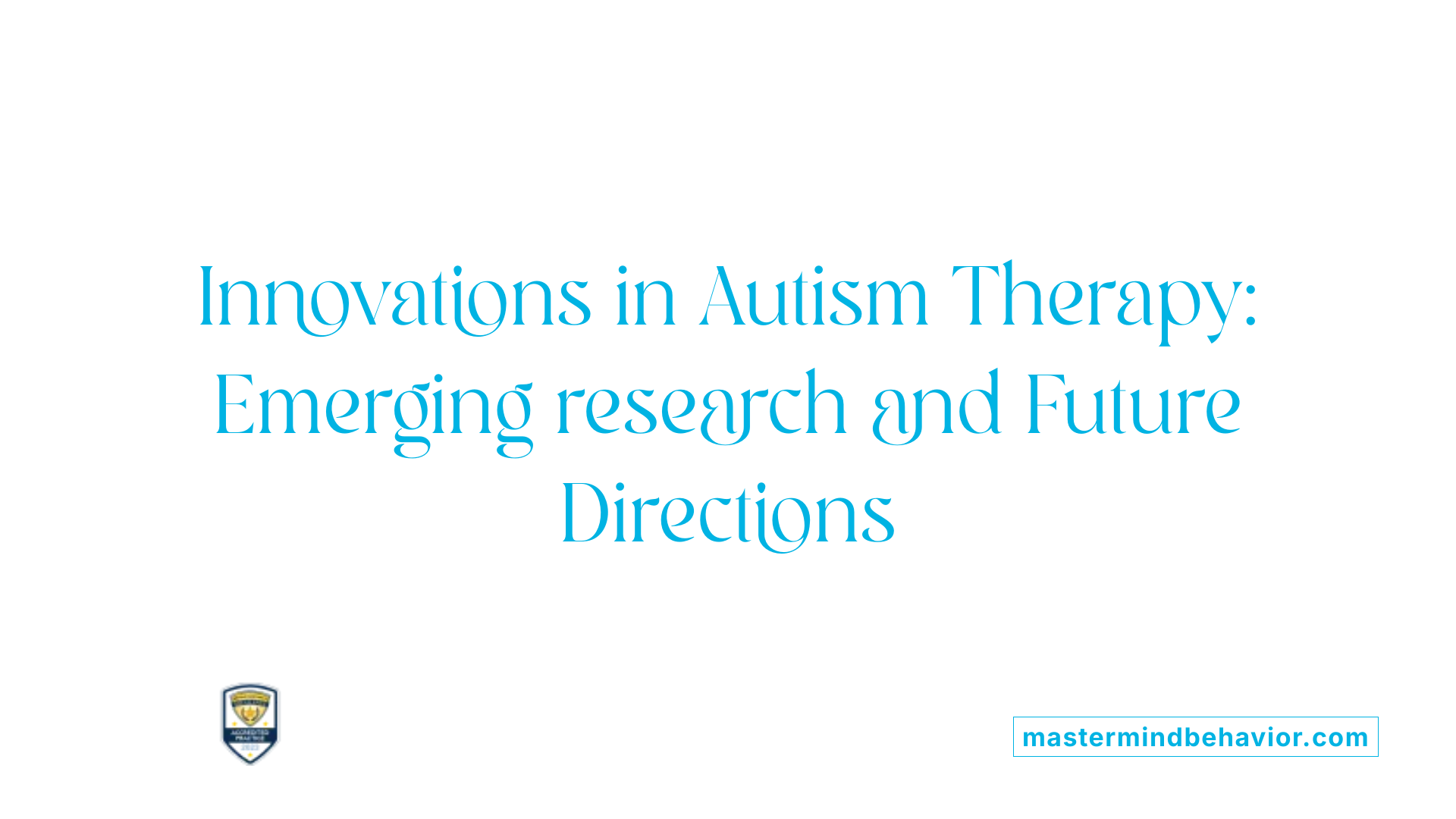 Current investigations into autism family therapy prioritize approaches that involve the family system actively. Family-centered intervention strategies recognize the family's pivotal role in a child's development and emphasize collaboration among parents, siblings, and caregivers.
Current investigations into autism family therapy prioritize approaches that involve the family system actively. Family-centered intervention strategies recognize the family's pivotal role in a child's development and emphasize collaboration among parents, siblings, and caregivers.
One influential direction in research is the use of Naturalistic Developmental Behavioral Interventions (NDBIs). These methods, including programs like the Early Start Denver Model and JASPER, integrate natural environments such as home or community settings and leverage child-preferred activities to enhance social, communication, and learning skills.
Technology also plays an expanding role in support and intervention. Telehealth services and mobile applications now offer accessible resources for coaching, education, and monitoring, helping reduce barriers related to geographical distance or limited local services.
In addition, addressing caregivers' emotional health is gaining attention. Interventions like mindfulness-based practices and Acceptance and Commitment Therapy (ACT) aim to decrease parental stress and improve overall family resilience. caregiver well-being has a direct impact on the effectiveness and sustainability of interventions.
Overall, this innovative research underscores the importance of early, intensive, and family-involved strategies. Tailoring interventions to family needs and utilizing technology are shaping the future landscape of autism family therapy.
| Approach | Description | Impact |
|---|---|---|
| Family-centered models | Active involvement of family in intervention planning and execution | Strengthens family bonds, improves consistency in therapy |
| Naturalistic Developmental Behavioral Interventions (NDBIs) | Use of natural environments and child interests to promote skills | Enhances social and communication skills effectively |
| Technology-assisted support | Use of telehealth, apps, and online resources | Increases accessibility, reduces barriers |
| Caregiver well-being strategies | Mindfulness, ACT, stress management programs | Improves caregiver mental health, supports intervention success |
Fostering Family Resilience and Long-Term Well-being
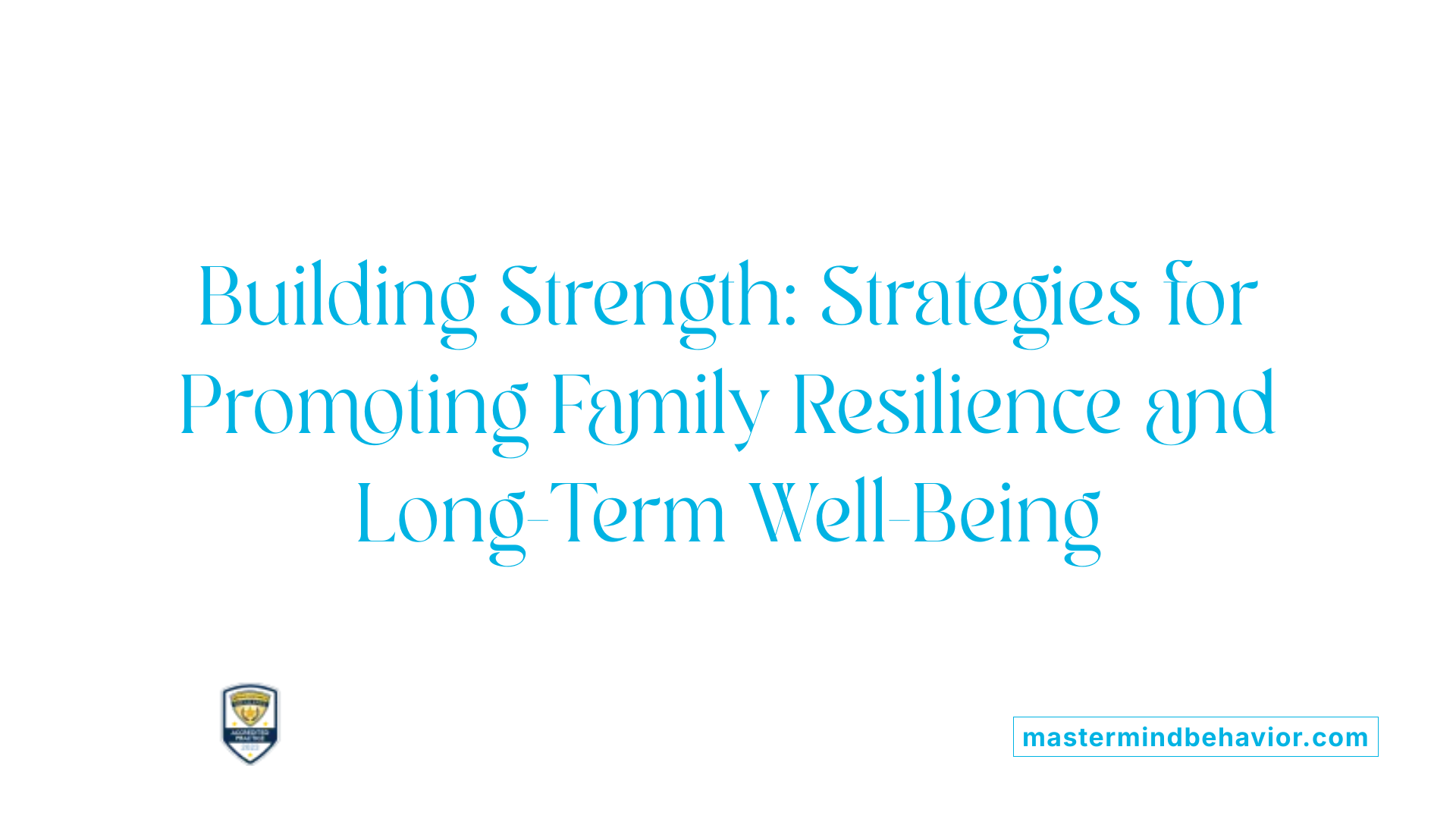
What strategies can support families affected by autism to manage challenges and foster resilience?
Families impacted by autism often face emotional, social, and financial hurdles. To navigate these effectively and strengthen their resilience, establishing strong support systems is crucial. Connecting with national organizations such as Autism Speaks and GRASP, along with local support groups, offers families access to resources, advocacy, and shared experiences that lessen feelings of isolation.
Early intervention plays a vital role in positive developmental outcomes. Caregiver-mediated therapies like naturalistic developmental behavioral interventions, including Project ImPACT and JASPER, focus on improving communication and social skills while reducing challenging behaviors. These programs are tailored to individual needs and involve parents and family members in the therapy process, fostering a collaborative environment.
Educating the entire family about autism helps build understanding and empathy. Involving siblings and extended family members in learning about autism characteristics encourages cohesive support and reduces misunderstandings. This inclusive approach strengthens family bonds and enhances the collective capacity to cope.
Addressing caregiver stress is essential for maintaining overall family health. Techniques such as mindfulness exercises, regular self-care routines, and practical supports like respite care and community involvement can alleviate emotional strain. These measures ensure that caregivers sustain their well-being while supporting their autistic loved ones.
Finally, promoting inclusion in educational settings and community activities, alongside continuous access to supportive services, empowers families to manage daily challenges. With ongoing resources, education, and community support, families can build resilience and improve their long-term well-being.
Empowering Families for Better Outcomes
Navigating family life with autism presents unique challenges but also opportunities for growth and resilience. ABA therapy, when integrated within a strong support system and complemented with effective communication, education, and community resources, can transform family dynamics—reducing stress, fostering understanding, and strengthening bonds. Emphasizing early intervention, parental involvement, and ongoing family-centered strategies ensures that families are equipped to support their children’s development while preserving their emotional and relational health. With continued research and a commitment to holistic support, families impacted by autism can thrive, creating enriching environments where every member progresses towards greater independence and connection.
References
- How Does Having a Child with Autism Affect the Family?
- Having a Child With Autism Affect the Family? | Little Rays ABA
- Applied Behavior Analysis (ABA) | Autism Speaks
- How Autism Affects Family Life and Dynamics - A Better Way ABA
- How ABA Therapy is Transforming the Lives of Children with Autism
- Autism's Effect on Families: A Deeper Look - Jade ABA Therapy
- Benefits of ABA Therapy for Children with Autism
- Applied Behavior Analysis (ABA) | Autism Speaks
- The Top 10 Reasons Children With Autism Deserve ABA - PMC










